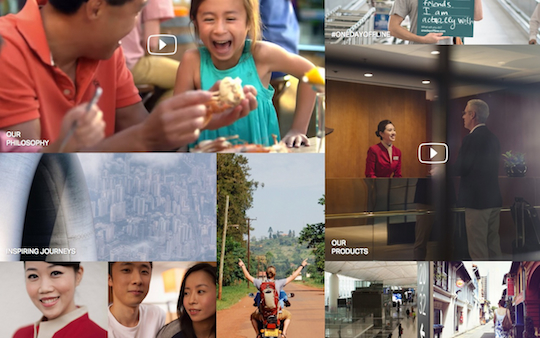Survival tips for a smaller, chunkier world of advertising
Share
The world of advertising is changing: from campaign-focused to always on, from TVC to omnichannel, from promotional to entertaining. Anne Rayner shares some survival tips.
 These days everyone is beseeched with the task of analysing and extrapolating meaningful insights from social chatter. The truth is we’ve only just begun to make sense of the deluge of data pouring into the ether.
These days everyone is beseeched with the task of analysing and extrapolating meaningful insights from social chatter. The truth is we’ve only just begun to make sense of the deluge of data pouring into the ether.
We recently polled Australian businesses and found that even though 72% believe their brands should be more active on digital platforms, 68% are unable to integrate data from social media, blogs, website traffic and search. That’s two thirds of businesses missing out on readily available consumer insight and the opportunity to sell.
Even of those that have comprehensive social listening in hand, are they any better prepared to react and capitalise on the moment, in the moment?
From campaign to always on
People talk a big game when it comes to always on marketing. Often these same folks still operate in the world of traditional media schedules and in some cases are only just moving away from thinking that posting their TVC to YouTube counts as digital.
The truth is most brands are still steeped in campaign planning: it’s how marketers are trained, and how marketing functions and their agencies are organised. Being always on requires different skill sets, mindsets, and resource planning, which is not easy to change in a short period of time!
Campaign planning can only take us so far
We’ve seen countless occasions where consumers take a campaign’s message and turn it into something far from the experience the advertiser intended. Today consumers control brand as much if not more than advertisers.
Still about a big idea
For advertisers to still play a role in shaping the experience, they must provide a strong narrative for their brand based on a big idea. This big idea is not an idea for a TVC so much as a creative platform that can guide content creation for whatever communication channel the brand will use. A post on Instagram requires different content than a Facebook sponsored post, which is different again to what works for pre-roll video. Yet in order to create an ecosystem which keeps leading back to the brand and keeps the conversation on course, a strong creative platform is essential. Cathay Pacific has done with well with its ‘#lifewelltravelled’ platform.
The big idea is the ‘creative guardrails’ for content production where there is no time for layers of approval and where the brand needs to sound personable and authentic. Nando’s did this perfectly when responding to the launch of Burger King in South Africa by tweeting, “Shem, @BurgerKingZA we hear your burgers only come in mild…to spice things up try our PERi-PERi chicken”.
Being always on is as much give as take in responding to what consumers are saying.
The marketing function must not only be responsive, but proactive in seeking information – ensuring they are focused on what to listen for and having a process in place so they can take action.
Take Nestlé for example. The company ran a brand building campaign for Kit-Kat to explore new consumer interest points. Taking a highly targeted and interactive content approach to engage, create dialogue and enthuse consumers, the campaign unearthed a niche appeal with consumers eager to share and discover Kit-Kat recipes. This type of in the moment react-and-response program led to a significant jump in brand awareness with over 2000 tweets in one day and over 1.6 million uses of #kitkat on Instagram displaying images of Kit-Kat food creations.
Advertising that isn’t advertising
Increasingly we’re finding evidence that the concept of ad recall or reach is irrelevant. Some of the most successful content doesn’t feel like advertising yet still impacts the brand. Whether it is brands being part of a conversation, designing bespoke content for a channel, or identifying other ways to engage, consumers are happy to allow brands in their lives as long as they don’t feel sold to.
Let’s take pre-roll as an example. Many brands are experimenting with creating pre-roll ads with the ‘skip’ button in mind, offering different versions of a creative based on a user’s search terms. The best brands take this type of bespoke approach to delivering engagement and interactivity to facilitate a back and forth.
Consider the Mountain Dew ‘Kickstart’ campaign. PepsiCo and Google tested three different versions of the campaign: a 30 second TVC, an adapted TVC with the brand in the first five seconds, and a bespoke version for pre-roll which was entertainment first, ad second. They found that on mobile, the bespoke pre-roll content received half as much recall than the other two versions yet achieved greater brand awareness.
Increasingly too, we’re seeing sophisticated ads designed to feel less like a broadcast from a brand and more like infotainment. No one (especially millennials) wants to be advertised to, but most consumers recognise marketing as necessary and are prepared to accept a reasonable amount of it.
Google recently released findings that suggest when YouTube ads include brand early on, it results in an inverse relationship between recall and engagement. Despite the higher ad recall and brand awareness lift, people were more likely to skip these ads, suggesting that consumers appreciate when they are less aware they are being advertised to.
Let’s face it, advertisers are no longer the only owners of brands. This means they must figure out why their brand has permission to be in people’s lives and decide how they can credibly participate or initiate a useful consumer conversation that is still true to the brand.
Anne Rayner is global head of communications research at TNS.

















